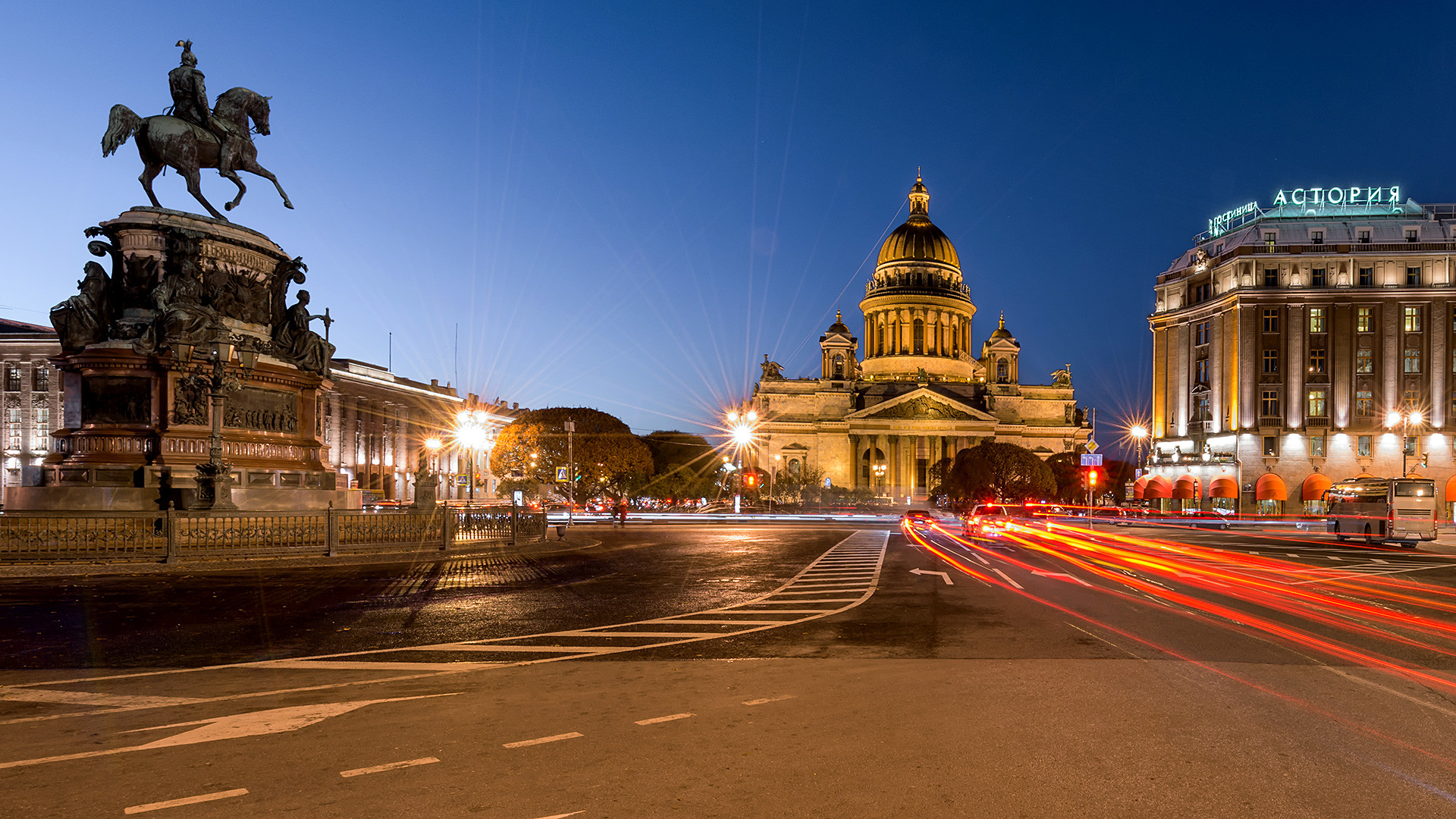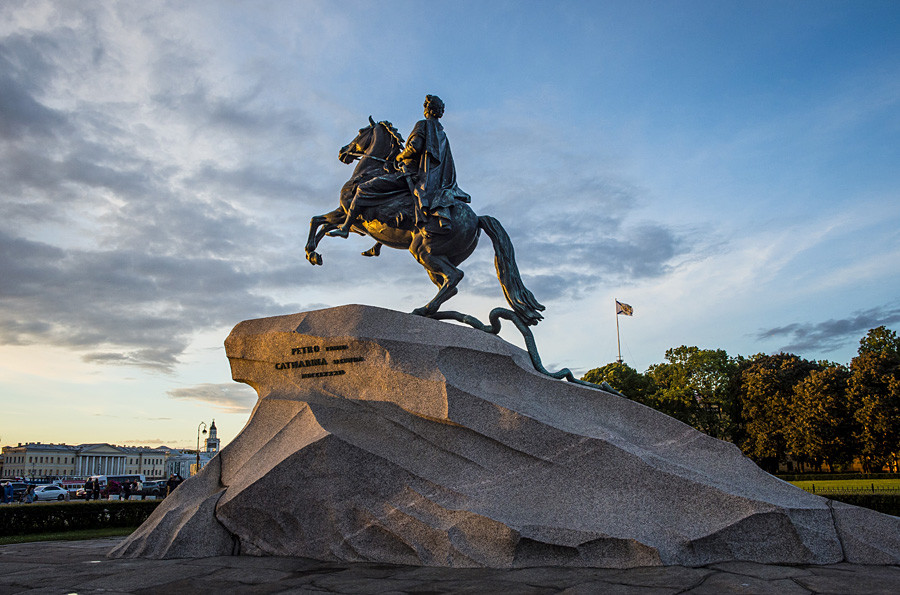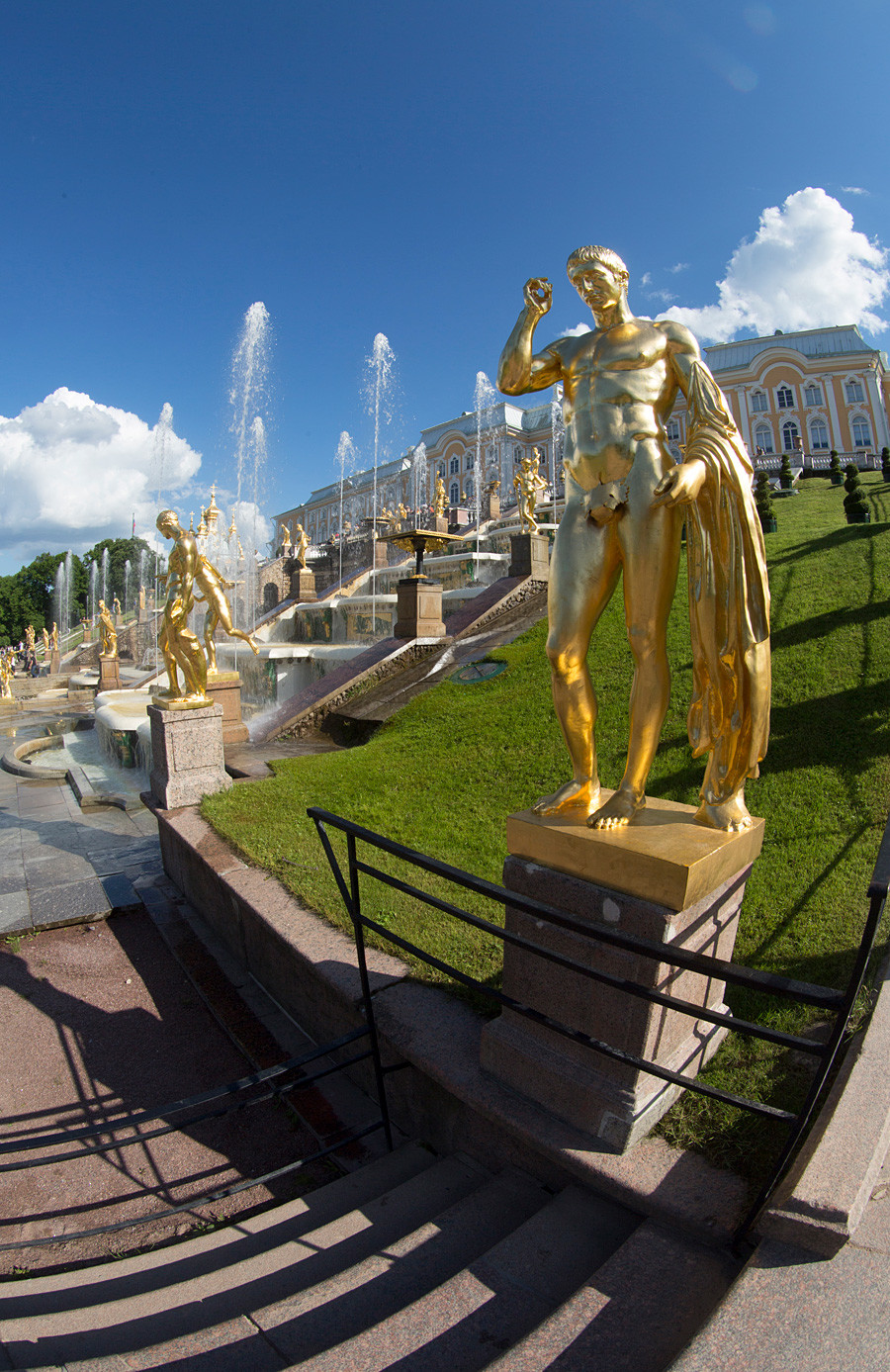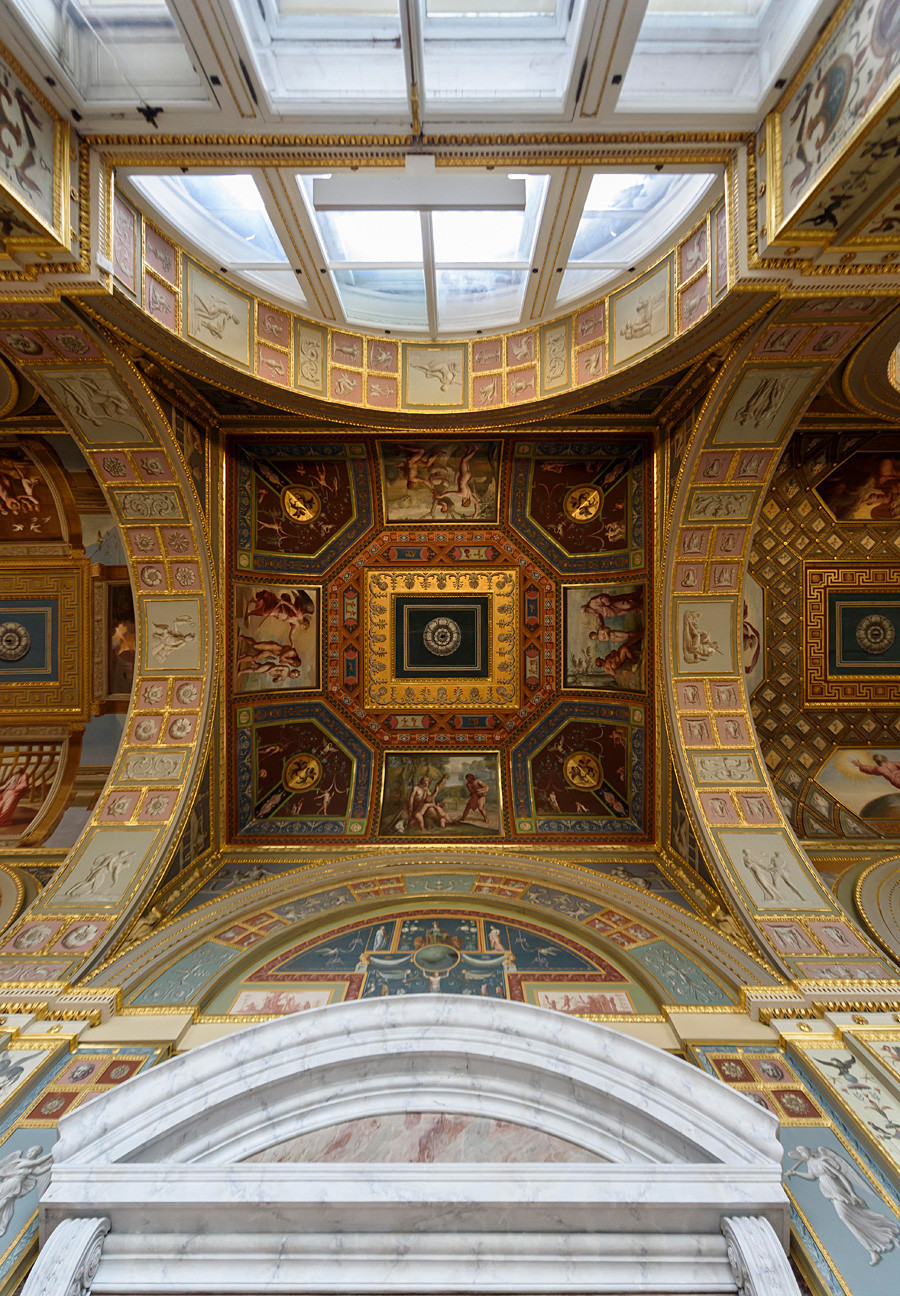
One of landmark of St. Petersburg is the area of Saint Isaac's cathedral and the monument of Emreror Nicholas I.
Getty ImagesSt. Petersburg was founded in 1703 by Peter the Great. However, from 1914 to 1924 it was renamed Petrograd, and from 1924 to 1991 - Leningrad.
Remember: You can spend three days in St. Petersburg without a visa. Read how to get there and what to see in just a few days.
The first
Interesting fact: The surrounding region is still known as Leningrad Oblast.
A century ago, Russia’s northern capital (then Petrograd) was awash with
If you want to delve further into St. Petersburg’s past, you can read our macabre history of this city, and take a tour of five infamous crime scenes.
The city remained the capital until the Empire’s demise following the 1917 Revolution. The Bolsheviks moved the capital back to Moscow in 1918 fearing

The statue of Peter the Great in Saint Petersburg at sunset.
AFPSt. Petersburg is Russia`s second largest city after Moscow with more than five million inhabitants. Located on the Neva River, it has a strategically important port on the Baltic Sea.
Have you ever been to St. Petersburg? If not, you can still try to guess which famous locations these are. Good luck!
The two main questions facing any traveler: What to see and where to go? We have written dozens of articles on the topic. Here are the best:

Palace Square from a bird's-eye view. Saint Petersburg.
Nikolay Gyngazov/Global Look PressOur host Tim Kirby spent the weekend in St. Petersburg his own way - by celebrating New Year in autumn, taking a (possibly illegal) tour, and eating
For its history, culture, and landmarks of course: Cathedrals, imperial residences, museums, and theaters. For the same reasons St. Petersburg is also called “the cultural capital.”

Golden statues and fountains in Peterhof Park Petrodvorets.
Nikolay Gyngazov/Global Look Press
Celling in The Hermitage, Saint Petersburgю
Eduardo Fuster Salamero/Global Look PressEnjoy the landmarks, city views and St. Petersburg`s amazingness via these 5 Instagram accounts!
But don’t jump the gun. Maybe you should never visit St. Petersburg at all...here are 15 reasons why.
Did we miss anything? What do you like most about S.t Petersburg? Write your thoughts in the comment section below!
“All you want to know…” is an extended guide to the most popular topics about Russia. We constantly work on new material, and this page will regularly be updated with new entries and information.
If using any of Russia Beyond's content, partly or in full, always provide an active hyperlink to the original material.
Subscribe
to our newsletter!
Get the week's best stories straight to your inbox